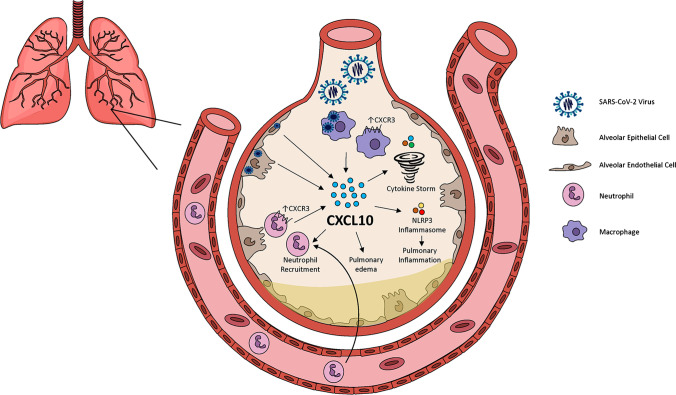Fig. 2.
CXCL10 enhances inflammatory infiltrate, pro-inflammatory cytokine production, and pulmonary edema in SARS-CoV-2 lung infection. SARS-CoV-2 infection triggers pulmonary endothelial cell recruitment of neutrophils which produce reactive oxygen species (ROS) [14]. Viral infection of type II epithelial cells induces alveolar macrophage activation results in the secretion of proinflammatory cytokines which induce the recruitment of highly toxic neutrophils and activated platelets into the alveolar space [2]. The SARS-CoV unique domain (SUD) modulates CXCL10-mediated pulmonary inflammation in a NLRP3 inflammasome-dependent manner [86•] and attracts and activates neutrophils 87•, 88•, 89. CXCL10-CXCR3 is critical for the influx of CXCR3+ pulmonary neutrophils and increase neutrophil oxidative burst in autocrine loop mechanism [87•]. CXCL10 enhances pulmonary edema [88•], the cytokine storm [54, 70], the release of inflammatory mediators, such as IFN-γ, and the infiltration of inflammatory cells, such as neutrophils and macrophages [88•]. CXCL10 also increases neutrophil and macrophage CXCR3 expression [88•].

